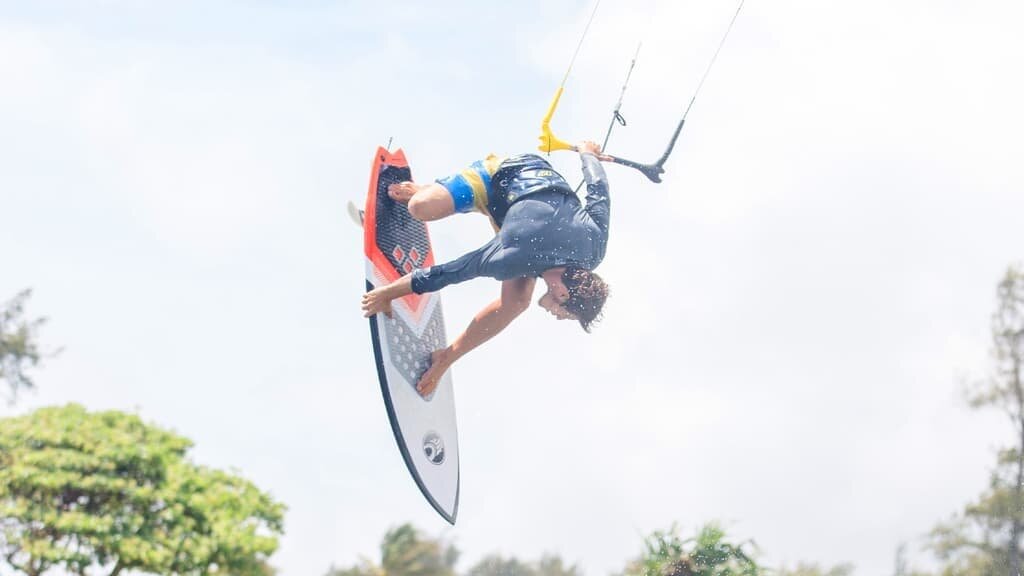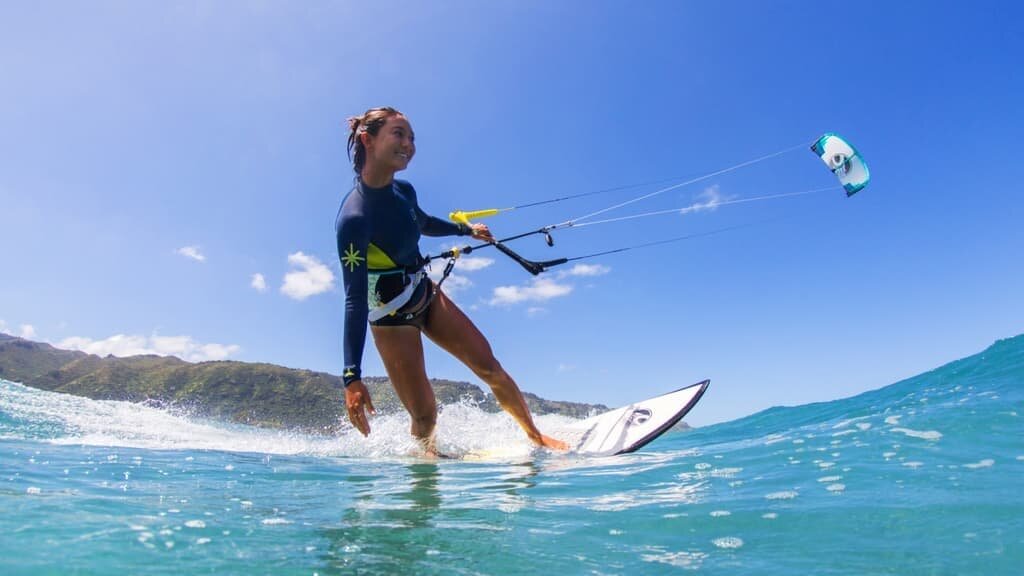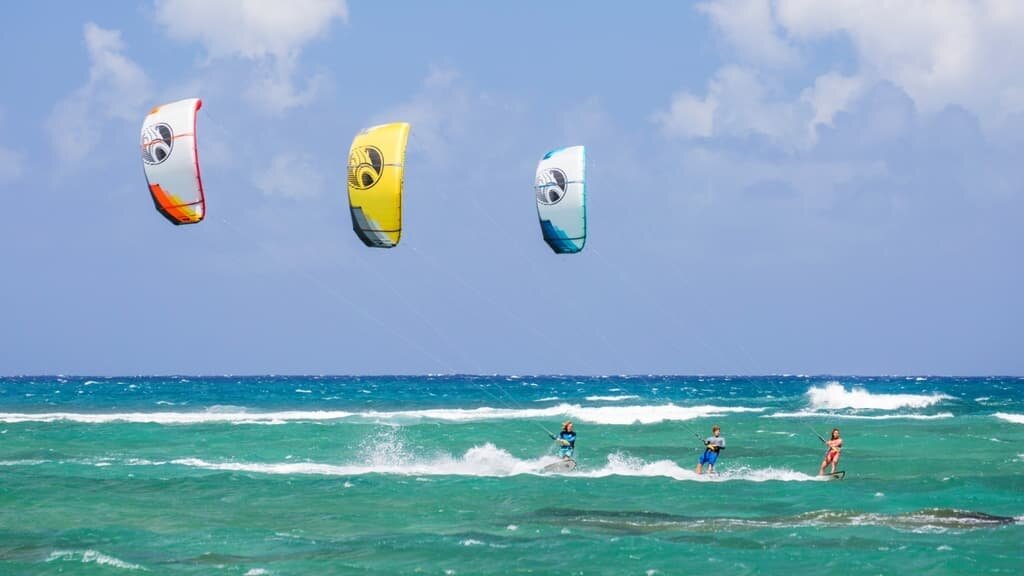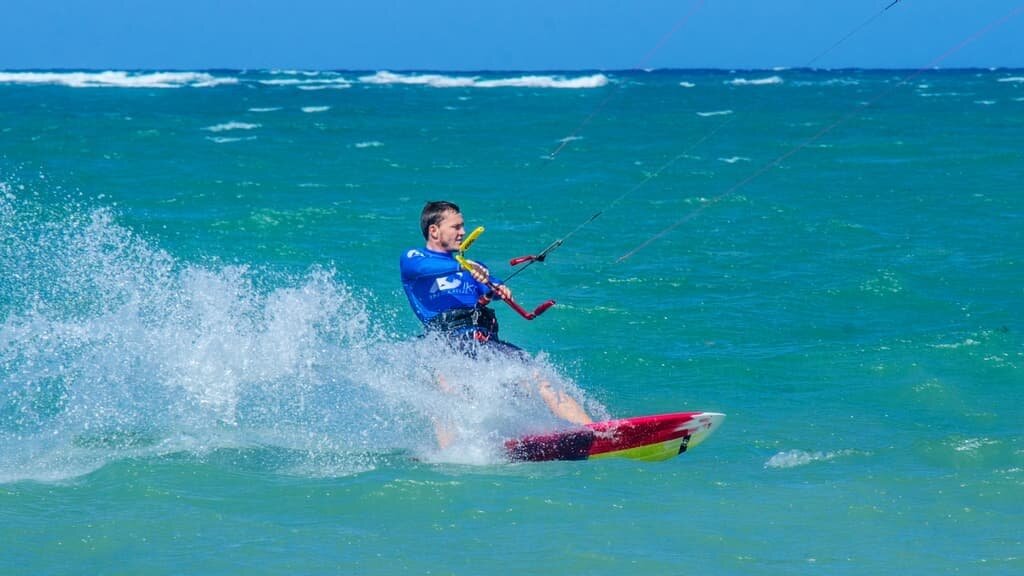Try the new IKO website at https://beta.ikointl.com/

A Closer Look at Directional Boards: What Makes Them Unique?
Whether you are already a kiter or someone thinking to get into the sport of kitesurfing, this article will peel the onion of directional boards. We will cover everything from what a direction board is down to the technical differences and variations between builds and shapes.
But First, What Is a Directional Board?
A directional board is essentially a kitesurfing version of a traditional surfboard. The reason kitesurfing surfboards are called directional boards is to avoid confusion with traditional surfboards and to exemplify the fact that directional boards function in one direction. Twintip boards, in comparison, can be ridden in both directions without changing feet or board nose.
On the contrary, directional boards require a change in board direction and feet when riding one direction or another. In other words, if you want to turn into the opposite tack, you either need to jibe from heelside to toeside riding (and then switch your feet on the board to come back to heelside riding) or simply stop in the water, move the board around and waterstart the other way.

What Is the Difference Between Traditional Surfboards and Directional Kitesurfing Boards?
You might be wondering (especially if you are a surfer) how does a directional kitesurfing board differ from a traditional surfboard? Essentially, the difference lies in the construction of the board which affects durability, performance and overall feeling.
The typical construction of a traditional surfboard is Polyurethane (PU) or Expanded Polystyrene (EPS) foam core with a hardwood stringer glassed either with Polyester Resin or Epoxy. The result is a light, responsive, affordable and easily repairable board.
These traditional surfboards are great for surfing, however, they won’t last long under heavy use as they are prone to be broken under strenuous stress and are easily dented by pressure.
Many of the directional kitesurfing boards today are made using molded technologies and a complex blend of different materials to achieve a desired stiffness, strength, weight, flex and shape. This creates boards more suitable for kitesurfing that can sustain greater stress while allowing the rider to ride through waves, chop and even use them for freestyle and jumps.
In general, directional kitesurfing boards are thinner and narrower than traditional surfboards as they require less flotation.
50 Shades of Directional Boards
Every rider will have a different preference in shape depending on riding level, style and spot conditions. The “outline” or “profile” refers to the overall shape of the board. The outline will determine the reaction of the board, turning speed, upwind ability, balance and stability.
For example, if you are a heavier rider in lighter wind conditions you will prefer riding a longer and wider board with a square tail to have more volume and surface area to be able to ride in the light winds.
Here are some of the characteristics associated with directional boards.
Size
The size of your board will vary depending on the rider’s own height, weight, riding level, and wind/wave conditions. Generally, board companies produce boards between five feet and six feet tall for kitesurfing. A rule of thumb is that taller and heavier you are, bigger the board you will have and vice versa.
Another factor to consider is the wind and waves you are encountering as if you have strong winds you can ride a smaller board though if the waves are big or the wind is light you will prefer a larger board with volume that can handle steep wave faces and speed.

Volume and Rails
Depending on your riding style - whether it is powered or less powered you will choose either a smaller or larger board. If you like riding with more power, you will prefer using a smaller board with thinner rails.
The rails are the side edges of the board. They vary in volume (thickness) and shape on different types of boards. A sharp rail adds control and helps manage speed and power. A softer rail feels looser and is more forgiving, better for wave riding or beginners and less likely to cause injury.
Rocker
The rocker refers to the curve of the bottom of the board from tip to tip (the “banana shape”), and the term is applied to twin tip or directional boards. The shape of the rocker line determines the type of performance the board will give. The flatter the rocker the faster the board and the more curved the rocker, the more maneuverable the board.
Unlike traditional surfboards that have many variations of rocker, directional kitesurfing boards have similar features across different brands since kitesurfers generate their own speed and don’t rely as much on the wave as surfers do. Most directional boards will have rocker from tail to nose because more rocker will help ride and maneuver in steep and powerful waves.
Occasionally you will find some models with rocker in the nose (the “scoop”) though little to no rocker in the tail (the “lift”). These boards are faster and quicker at planning than those with a “banana shape”. People who are looking for a more user-friendly, fast and freestyle oriented directional board might prefer it. They will not perform well in medium/large wave conditions though they will work really well in flat and small wave locations.
Tails
The size of the directional board’s tail can vary, greatly impacting the board’s feel and performance. If you want a more lively response from your board, you will want a narrower tail. If you want to have a more surf feel and using the power of the wave more than your kite, you will want a board with a wider tail.
- Round tails will provide a predictable turn and hold when riding waves- this translates to overall smooth performance.
- Square tails will help you catch and cruise waves with ease and have a lively feel when turning as it can lose traction easier.
- Swallow tails combine the predictability of a round tail with the lively feel of a square tail.
Fins
The fins on a directional kitesurfing board are primarily there to stabilize the board direction and reduce drift downwind. Fins on most recreational boards are relatively small, but the shape and material are still important to the board’s performance. This is especially true for directional boards where fins are essential to its performance.
In the world of fins, deciding and choosing which fin is right for you and your board will come down to preference, but here are some rules of thumb.
- If you are a taller and heavier rider - you will want to use larger fins and vice versa.
- A stiffer fin set that is equal in height both in its center fin and side fins will offer a predictable and stable ride.
- Avoid directional boards with quad fin setups (4 fins). Quad boards are meant to help generate speed and reduce maneuverability. Kitesurfers are continuously generating speed (thanks to the wind!) and require maneuverability which doesn’t come from a quad or five fin setups. Thruster setups (3 fins) are optimal for kitesurfing.
- Avoid using fins with “foil”. Foil in a fin helps generate speed which helps surfers in waves with little to no power where any help in speed generation is appreciated. As mentioned before, kitesurfers are continuously generating speed which makes the foil on a fin useless and actually damaging to the performance and stability. When a fin with foil gets to much speed it creates turbulence underwater which makes the board shake nervously leading to a loss in control.

Straps, Pads or Wax?
When you see someone kitesurfing a directional board you will see them either riding with or without straps. Most boards come with inserts for foot straps though not every rider uses them.
The inserts are visible on the deck of the board both in the front and back of the board and are used to screw in foot straps. Some kitesurfers prefer using both front and back foot straps, some enjoy only a one-foot strap in the front, and others enjoy riding with no foot straps at all which is known as “strapless riding”.
Some strapless boards will have front and back cushion pads or only a back pad. Companies have been experimenting with these pads for the last years to improve comfort while riding and increase the durability of the boards as pads help absorb the impacts on hard landings and pressures. Some riders prefer using wax on the board instead of a front pad as they say it gives them a more “direct” and traditional surf feeling to the board.
Conclusion
The discipline of riding a directional board is attracting all kinds of individuals because of the thrill behind riding waves and doing something different than riding a twin tip. If you have never tried riding a kitesurfing directional board we highly recommend trying it out especially if you live in or near an area with waves!
If you want to get started, we highly recommend getting in contact with your nearest IKO Center for lessons. Even if you are experienced on a twin tip, you will soon find out that riding a directional board involves new techniques and sensations that make this discipline so unique and positively addictive!
.png)

